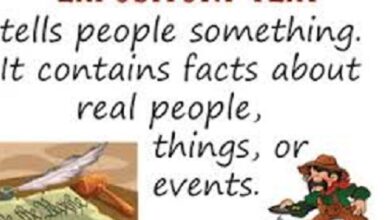Examples of two way communication Characteristics advantages disadvantages definition
Bilateral communication/ two-way communication
Two-way communication is a type of communication in which the participants fulfill both the role of sender and receiver. Thus, the one who first emits the message later becomes the recipient of the reply from his interlocutor. The best example is a conversation between two people. In this article we will provide you the Examples of two way communication.
Communication is defined as the act of exchanging information between two or more individuals. It is the most basic form of contact between people and is the basis for the transmission of knowledge, opinions or concepts between human beings.
There are several ways to classify the act of communication. Among them is the division between unilateral , when the information is transmitted only from a sender to a receiver without the latter being able to participate, and bilateral , in which the receiver becomes the sender to continue communication.
This type of communication is the most common among human beings. Messages are exchanged immediately and technology has allowed that distance is not an impediment to carry out the process of communication.
Characteristics of two-way communication
It is reciprocal
The most important characteristic of two-way communication is its reciprocal condition. Likewise, it stands out for allowing feedback.
Sender and receiver
To understand its characteristics, it is necessary to know the definition of two concepts linked to communication: that of sender and that of receiver.
- The sender is the person or entity that issues the message.
- The receiver is the one who receives and interprets (decodes) it.
In the case of bilateral communication, these two actors continually exchange their roles. Thus, not only is there a sender that transmits information to a passive receiver, but this one assumes the role of sender to reply to the information received. This role reversal goes on for the duration of the conversation.
Types of bilateral communication
There are two types of bilateral communication, direct and indirect:
Direct bilateral communication
The participants in the communicative action are present in the same place. For example, it occurs when a customer asks the seller about the characteristics of a product and he answers.
Indirect bilateral communication
In this case, the sender and the receiver do not share the same space. However, both of you can continue to communicate as if it were direct. A current example is that provided by social networks. In them, the distance that separates the participants does not matter, since they can maintain contact almost simultaneously.
Differences between bilateral and unilateral communication E
In the case of unilateral communication, the roles of sender and receiver are fixed and do not change during the process.
For example, it occurs when watching television, the message of which is received by the viewer without the possibility of him replying. Likewise, it is also the case when an opinion is issued before a person and he prefers not to continue with the subject.
This lack of response is the main difference with bilateral communication, which is characterized by the change in the role of the recipient. Thanks to this, it is considered as a more complete way of communicating as there is an exchange of information.
Advantages
In most cases, two-way communication offers many advantages to human beings. For this reason, it is considered one of the bases of coexistence.
1- Participation and fluency
Due to its own characteristics, for this type of communication to take place, the participation of two or more people is essential. In this sense, it encourages all participants to participate.
In addition, with this type of conversation it is easier for a more fluid interaction to occur.
2- New themes
When there is an exchange of opinions between the participants, it is very easy for new topics to emerge to continue the conversation and, thus, enrich it.
It is not uncommon for a conversation about a specific topic, regardless of its importance, to evolve and end up becoming an exchange of views on deeper and more interesting issues.
3- Creation of new ideas
That same exchange of information encourages new ideas and thoughts to appear. Because all parties contribute, two-way talk is a very effective way to foster creativity.
Disadvantages
Two-way communication, despite its advantages, is not exempt from presenting some elements that can hinder your final objective.
1- Availability
For a communication of this type to develop, its participants must be available and willing to sustain it. This necessity can cause that, sometimes, the communication cannot take place and that it must be delayed.
2- Time
By emitting several messages with their corresponding responses, this type of communication requires more time than the unilateral one. In addition, there is a risk of interruptions.
3- Deviate from the topic
Although the appearance of new topics is usually also considered an advantage, in certain situations this type of communication can deviate from the main topic to deal with other secondary or less interesting ones.
Examples of two-way communication
Given the large number of times this type of communication is used in everyday life, the examples about them are innumerable. At almost any time when two or more people meet, they begin to practice it.
- Two friends meet on the street and begin to tell each other how each of them spent the weekend. Each comment also generates responses about it.
- Calling the couple on the phone leads to a two-way conversation to, for example, make a dinner date.
- Between classes, it is normal for students to establish a conversation about what they have studied or the work they must present to a teacher.
- When a teacher announces that he is going to take an exam, students often ask him about the syllabus and other related matters. The teacher answers the questions, thus establishing a type of two-way communication.
- Chatting or participating in social networks are other examples of this type of conversation. The distance does not matter, but rather that there is a transmitter and a receiver that interact and exchange roles at various times.
We hope that you have noted the Examples of two way communication.

